ASUS at Computex 2016: The 10 Years of the Republic Of Gamers (ROG) Booth Tour
by Ian Cutress on June 22, 2016 8:00 AM ESTI wanted to touch on some of the non-ROG hardware in the ASUS Booth, some of which we haven’t seen before. First up is the TUF range, which ASUS uses as their hardware wearing, more physically demanding and higher warrantied product line. Typically we see one or two TUF motherboards each generation, with the Sabertooth variant in a camouflage design and the Mark S in white camo. At this point the Mark S doesn’t have the TUF branding, but it takes a lot of the aesthetic design – we reviewed the genesis model #0001 off the production line back in November 2014.
990FX Sabertooth R3.0
Despite AMD’s 990FX platform being nearly five years old, the FX processor line still represents AMD’s high performing processor lineup for consumers. Due to the age, most motherboard manufacturers issue the odd update now and again to refresh the line with some of the latest technologies. The 990FX Sabertooth has had two versions already, and at Computex we saw R3.0 with RGB LEDs, reinforced PCIe slots, M.2 integration, USB 3.1 Type-C, semi-transparent PCIe latches and a new variant of ASUS’ Q-LED.
Being part of the TUF family means that ASUS tends to over-engineer the board to cope is harsher environments. This means upgraded power delivery, combination heatsinks and that reinforced PCIe slot, but it also gets visual enhancements such as the color scheme and rear IO cover to maintain the look.
The rear panel comes with four USB 3.0 ports from the chipset as well as four USB 3.1 ports. These are from ASMedia ASM1142 controllers, with one for each pair of ports. One of these is USB Type-C, supporting the reversible USB connection standard now being seen on some smartphones.
One of the interesting things for me, however, was the adjustment of the Q-LEDs. ASUS’ system uses a series of LEDs that light up as the system turns on and configures itself for the hardware inside. As the hardware may have changed since the startup, or the quality of the hardware has changed over time, the system needs to ‘retrain’ its pathways to make sure it can support the data rates the BIOS tells it to. As the system checks different parts of itself in POST, the LEDs relating to CPU, DRAM, VGA, Booting and PWR light up in turn. If there is an issue, the LED that stays lit should show you which part has an issue.
Now normally the Q-LED layout was a small segment on the top right of the board, with some onboard text saying which LED did what. It would seem that for the R3.0, the Q-LEDs have made it on the chipset heatsink. I think this is a great idea, as it allows for a bigger font size and arguably more powerful/configurable LEDs next to a microcontroller. Ultimately I think the Q-LEDs should be nearer the bottom, just in-case a large GPU comes along and blocks the view.
Whether you think this is useful for a 990FX board in mid-2016 is up to you. ASUS seems to think so.
TUF Detective
Attached to the Z170 TUF motherboard was a tablet running the TUF Detective application. The idea here is that a user can see fan/temperature/voltage values on the fly, or control the system via the app. At present the tablet has to be connected to the motherboard, and we have seen something similar to this on ASUS Extreme motherboards and overclocking, however from the monitoring point of view this is an interesting angle. If ASUS combined this with a self-contained IPMI control chip similar to servers, and a WiFi/Bluetooth module that was separate, perhaps a user could control their system via WiFi rather than USB.


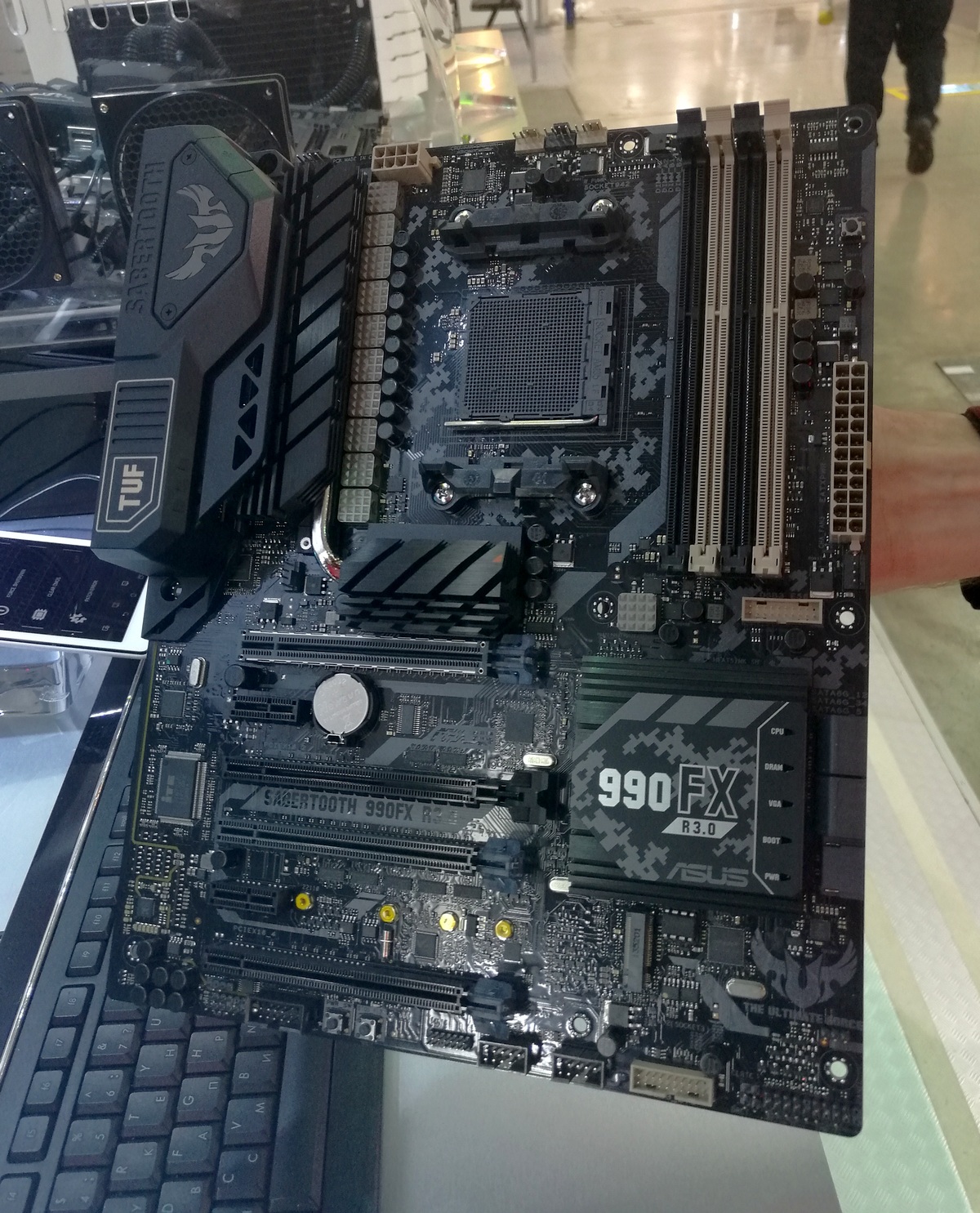
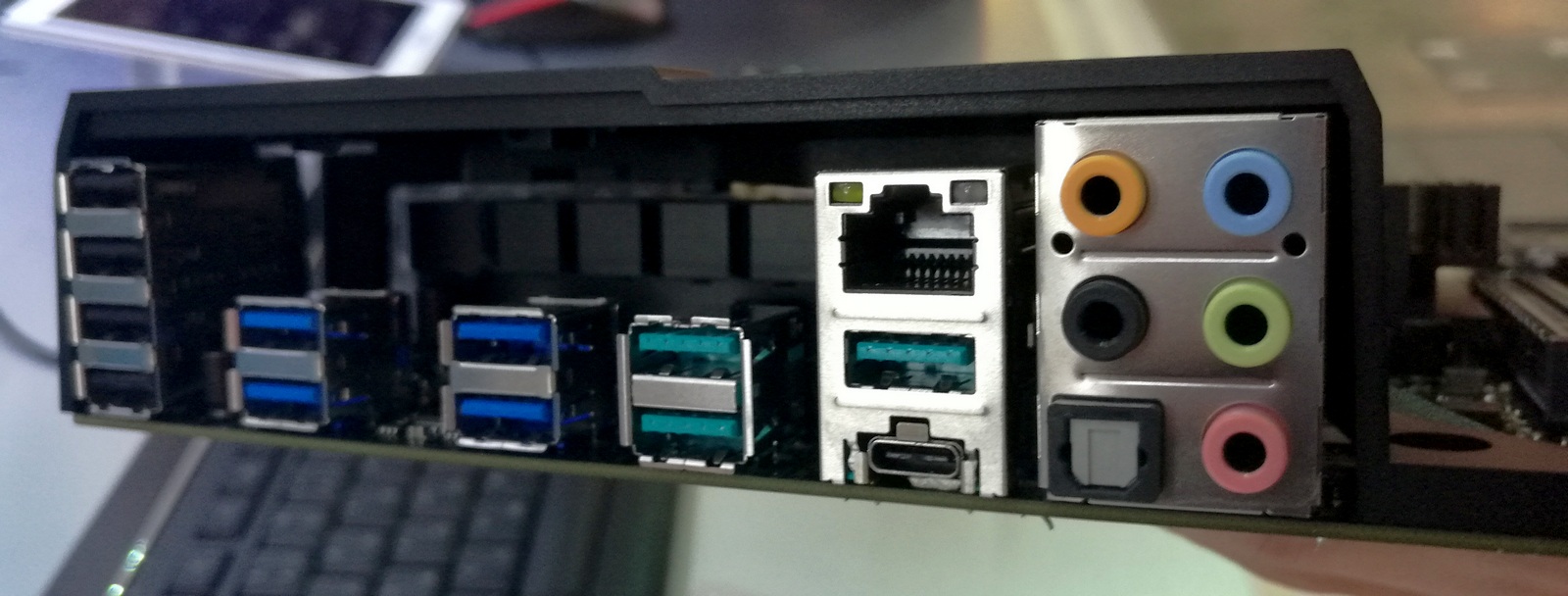
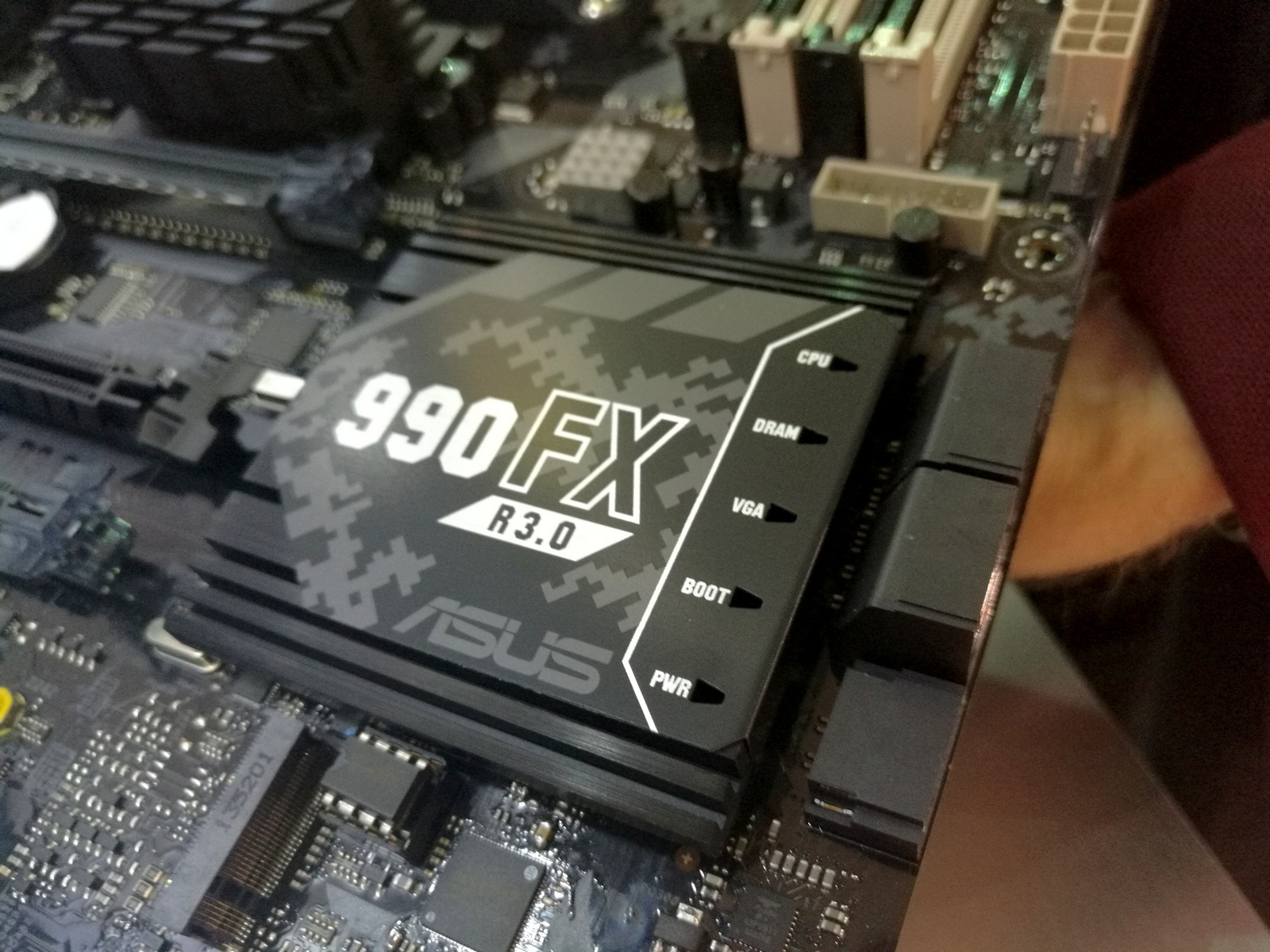
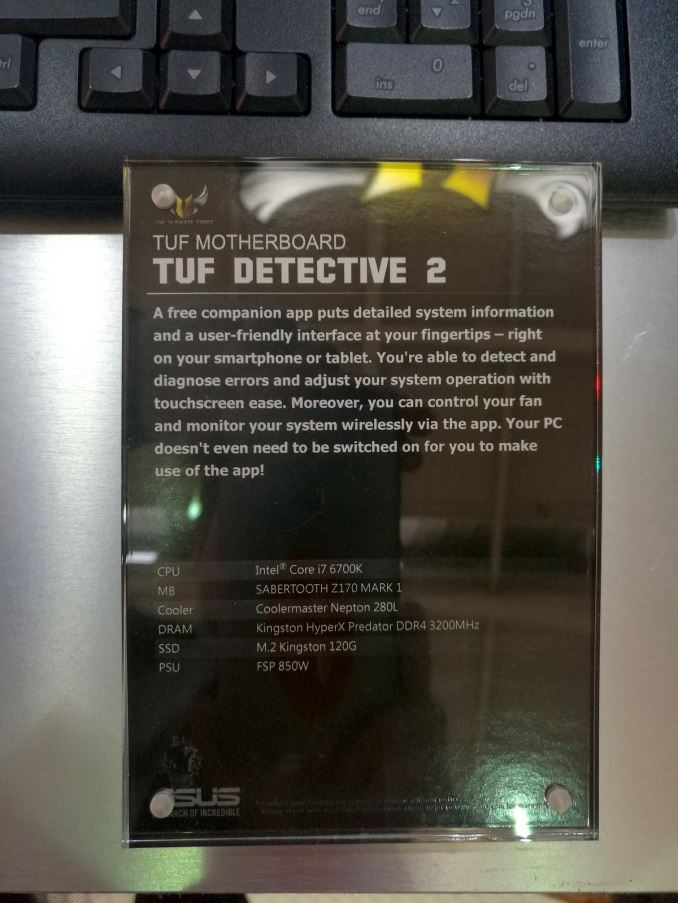
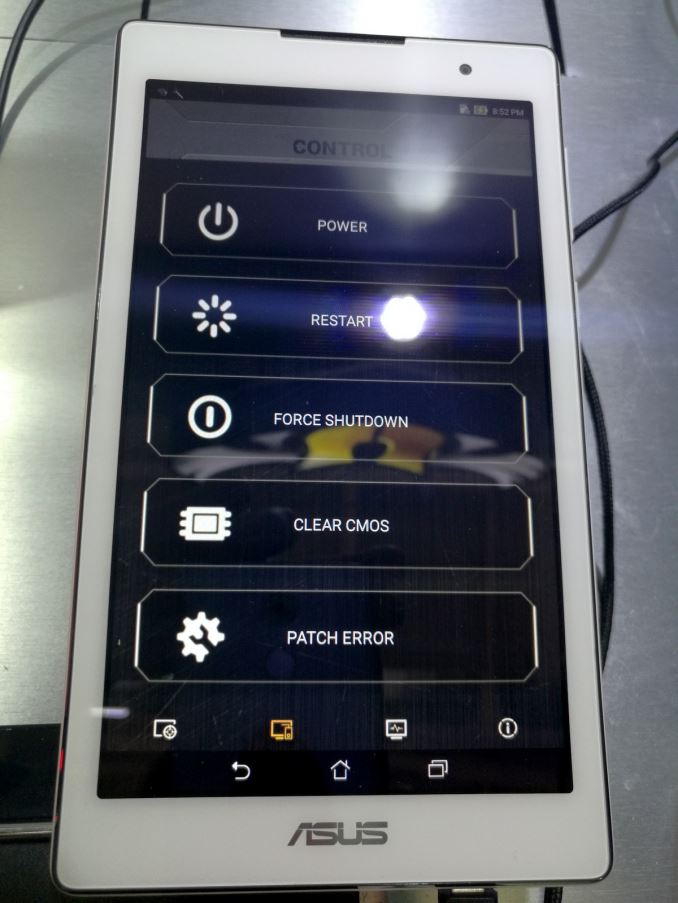








43 Comments
View All Comments
YukaKun - Wednesday, June 22, 2016 - link
Project Avalon has my attention. Please Asus, make it work and let it be adopted by other players. I know R&D cost and you want your work to be rewarded, but please think of the Children! Why no one thinks of the Children?!No wait... Think on the possibilities of making MoBos like that. Just get CoolerMaster, Thermaltake and some other case makers onboard with it and the rest will follow. Add it to the form factor consortium or something XD
Cheers!
The_Assimilator - Thursday, June 23, 2016 - link
If the only thing that comes of Avalon is cusomisable rear IO panels on ATX boards, it's still a win.asuglax - Thursday, June 23, 2016 - link
It's design of how they configure things with multiple PCI-e extensions will not be compatible with PCI-e 4.0, which is limited to two connectors in the signal path before signal loss becomes an issue. So, pretty much by the time something like this would get to market, it would be obsolete.stanleyipkiss - Wednesday, June 22, 2016 - link
That 5k monitor better be at $1000.damianrobertjones - Wednesday, June 22, 2016 - link
"currently ways almost 40 lbs"That's a lot of ways... all 40 of them! Weight until people find out about that. I cannot wait :)
Grayswean - Wednesday, June 22, 2016 - link
No whey, man!Wardrop - Wednesday, June 22, 2016 - link
Wate, watt?Ian Cutress - Thursday, June 23, 2016 - link
:D Fixed :)vanilla_gorilla - Wednesday, June 22, 2016 - link
Nice link on that monitor:file:///C:/Users/Excess/Dropbox/Camera%20Uploads/Computex%202016/Day%201%20-%20Tuesday/ASUS/amzn.com/s/?tag=anandtech01-20&field-keywords=UP2415Q
Holliday75 - Wednesday, June 22, 2016 - link
This looks like a trick. What are you trying to pull here, buddy?